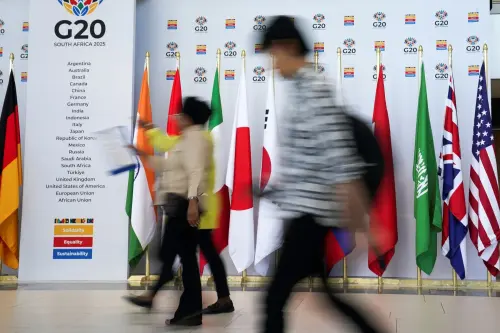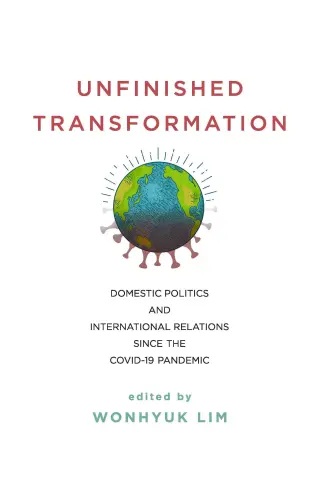Content from the Brookings Institution India Center is now archived. After seven years of an impactful partnership, as of September 11, 2020, Brookings India is now the Centre for Social and Economic Progress, an independent public policy institution based in India.
The election of Donald Trump as US president has unleashed further uncertainty on a world already in considerable flux. Trump has promised economic protectionism, reversals on immigration and militarism against terrorists, but has outlined few concrete policies.
Much will depend on his cabinet appointments and his ability to work with US Congress and bureaucracy. Whatever path the US takes going forward, the actions and orientations of China and India – and the relationship between the two – will have even greater implications for the international system.
China and India have two of the world’s four largest militaries, both of which are modernising. They also remain among the fastest growing major economies: China’s is second behind the United States and India could well be the third largest by 2030.
All countries have a grand strategy, whether or not they know it. But the Chinese government under Xi Jinping and the Indian government under Narendra Modi have been clearer and bolder than many of their predecessors in articulating what they would like to achieve nationally, regionally and globally.
China’s current leadership has adopted three big concepts. The first is the Chinese Dream (or China Dream), which aims to make China a “fully developed nation” by 2049 as part of the “great rejuvenation of the Chinese nation”. The second is the Belt and Road Initiative (also known as One Belt, One Road), an ambitious effort to export excess industrial capacity and thereby extend Chinese strategic influence to Central and Southeast Asia, Pakistan and West Asia, and on to Africa and Europe.
The third is a ‘New Type of Great Power Relationship’, the idea that China and the United States can recognise one another as peers and respect each other’s spheres of influence.
India has its own equivalents. Make in India is a campaign to accelerate India’s economic development through increases in manufacturing, large-scale employment and boosts in exports. ‘Neighbourhood First’ attempts to preserve India’s regional primacy through diplomatic attention, connectivity and assistance, while Act East is meant to improve India’s connectivity eastwards while deepening security and institutional partnerships.
Finally, the notion of ‘India as a Leading Power’ outlines India’s ambition to become a great power in a multipolar world.
Make in India finds some natural complementarities with the economic dimensions of the Chinese Dream. Should China evolve into an advanced consumer- and services-driven economy, an India that boosts manufacturing and exports is necessary and should (from Beijing’s point of view) be desirable. But for now, both China and India appear to be struggling with their internal economic transformations.
There is less overlap between China’s One Belt, One Road and India’s Neighbourhood First and Act East policies. Security competition between China and India in South Asia is intensifying, although Southeast Asia offers some avenues for mutually beneficial economic cooperation.
Finally, a ‘New Type of Great Power Relationship’ is at complete odds with India as a Leading Power: a world run by two countries leaves little space for others.
Given China’s overall trajectory and the concerns shared by many of its neighbours, the onus today is on Beijing to ensure a more cooperative international environment. Should China make efforts to move from a territorially revisionist to a status quo power, from a mercantilist to a market economy, from an opaque to a more transparent political system, and from a violator to an abider of norms on non-proliferation and freedom of navigation, India (and indeed most others) should have every reason to celebrate and facilitate its rise and deepen cooperation.
But there are few indications to date that China is moving in these directions. For now, an opaque, mercantilist, revisionist, and delinquent China is here with us to stay and, more importantly, is primed for ascendancy.
In the absence of positive signs, India must be prepared for a more competitive approach to China. It must double down on its efforts at improving connectivity with South and Southeast Asia, including infrastructure projects, facilitation agreements and institutional cooperation. India must also clearly delineate behaviour that fundamentally threatens its interests in its immediate vicinity and act decisively to advance those regional interests.
It will have to deepen its security and commercial partnerships with like-minded countries in the region, including the United States, Japan, Australia, Singapore, Indonesia and South Korea. And India may even have to start thinking asymmetrically about China.
This might involve engaging more with Chinese civil society, being more mindful of overseas Chinese facilities, reviewing aspects of market access, developing offensive capabilities with respect to new technologies, and contrasting itself with China at global governance forums. All the while, New Delhi must constantly remind Beijing that the successful rebalancing of the Chinese economy can be win-win for both countries.
The United States will not disappear as a global power overnight. But it would be a mistake to respond to Trump’s election with business as usual. Few priorities will be as important as rethinking Sino-Indian relations in a transformed international environment.
This article first appeared in the Times of India on November 29, 2016. Like other products of the Brookings Institution India Center, this article is intended to contribute to discussion and stimulate debate on important issues. The views are of the author(s). Brookings India does not have any institutional views.
The Brookings Institution is committed to quality, independence, and impact.
We are supported by a diverse array of funders. In line with our values and policies, each Brookings publication represents the sole views of its author(s).



Commentary
Op-edHow to tame a dragon: To deal with Chinese muscle in a post-American world, India must think asymmetrically
Times of India
December 2, 2016